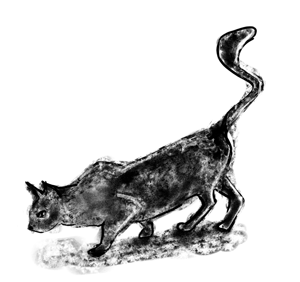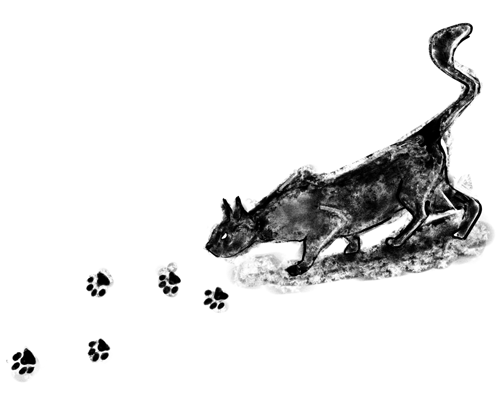The other day I drew this cat for a project I’m currently working on:

It’s a cat with four legs, one head and a tail. You could even say it was a beautiful and elegant one, like any good cat. To sum up, it fulfilled its purpose.
But after a while I wondered, is this what I want to do in life? Drawing cats that fulfill their purpose? Then I decided to try a second time, and this was the result:

It’s still far from perfect, but this cat Has a Plan. And it’s definitely more interesting to draw cats that Have a Plan than cats that Fulfill their purpose. Besides, they are probably not only interesting for me to draw, but also for people (readers, players, etc.) to see.
What I did in this second proposal was just:
- Empathizing some features (through sharper forms, and even a bit of disproportion).
- Not explaining everything (What are these footprints? Why is the cat chasing them? The truth is… I don’t even know!)
- Looking for contrast (It’s a cute and silent kitten, but its intentions seem twisted).
And that’s it. That’s how you take something that’s generic and plainly figurative and turn it into something that tells you something, that rises questions, that moves something inside you.
This is just a simple example, but a good example I think of how we can apply a similar creative process to give more strength to a visual message.
Leave a Reply